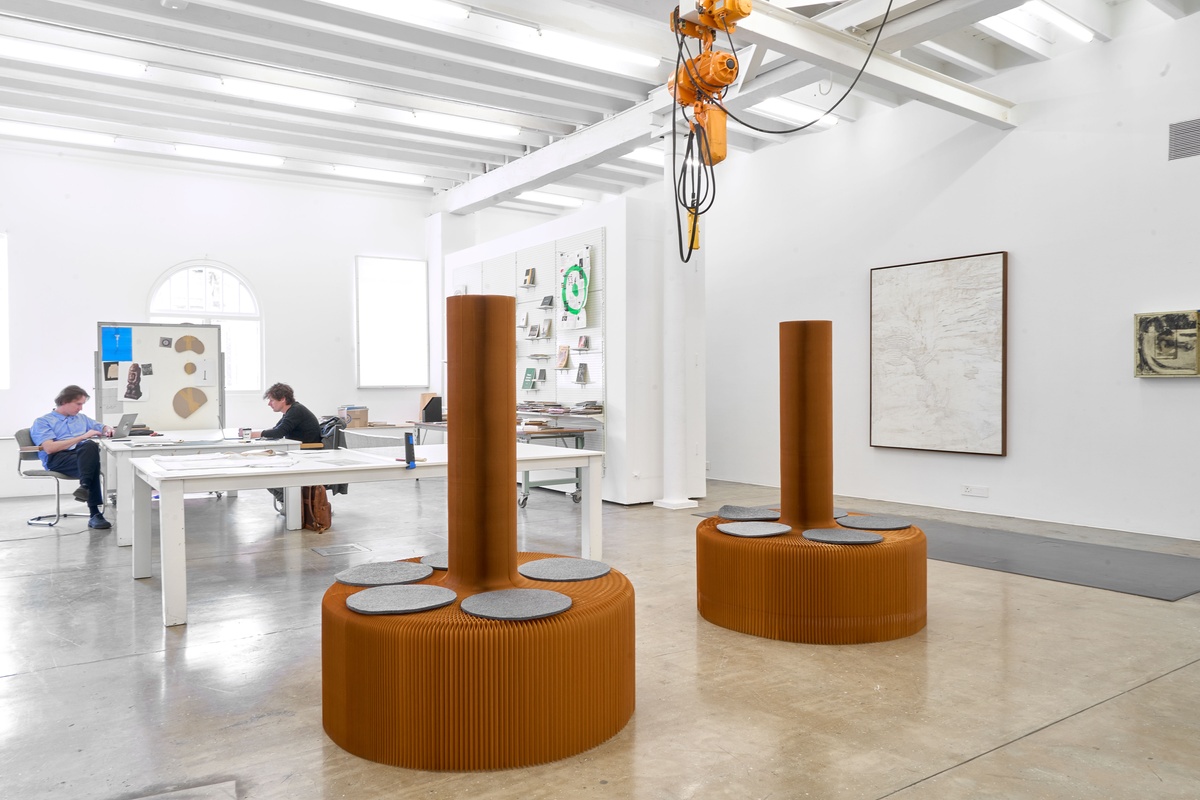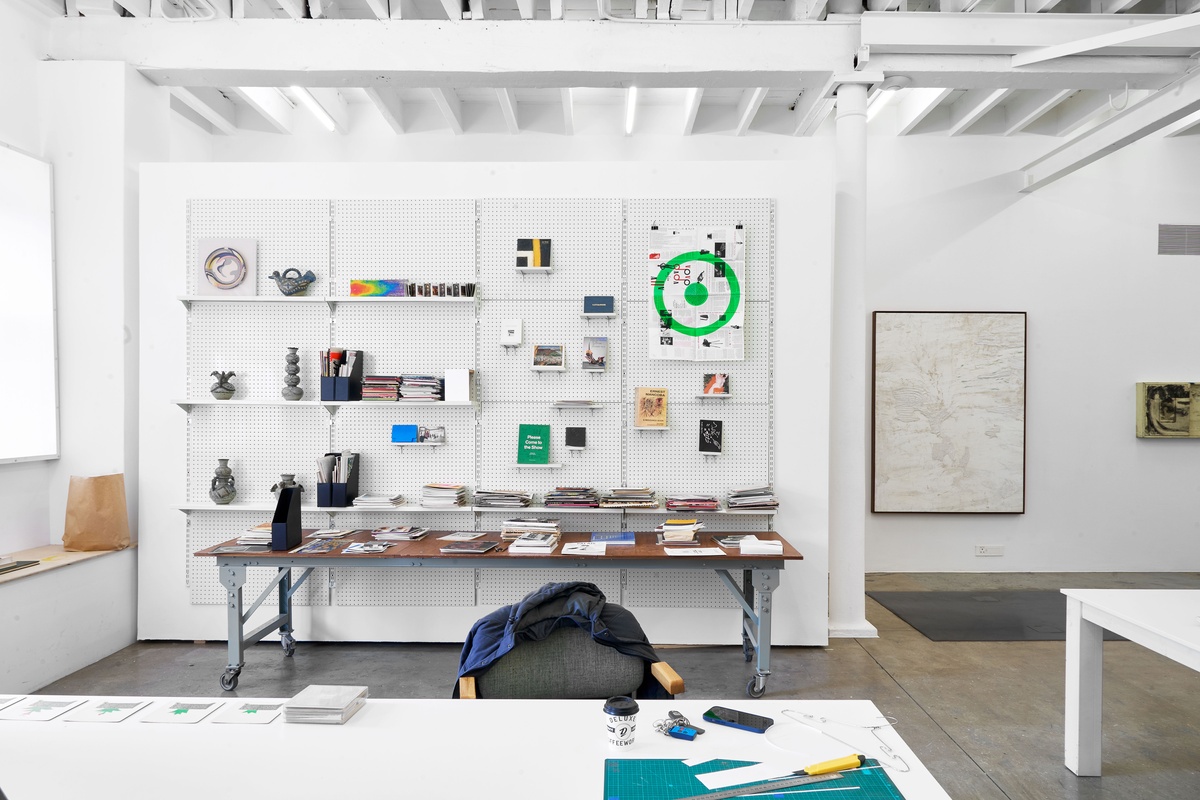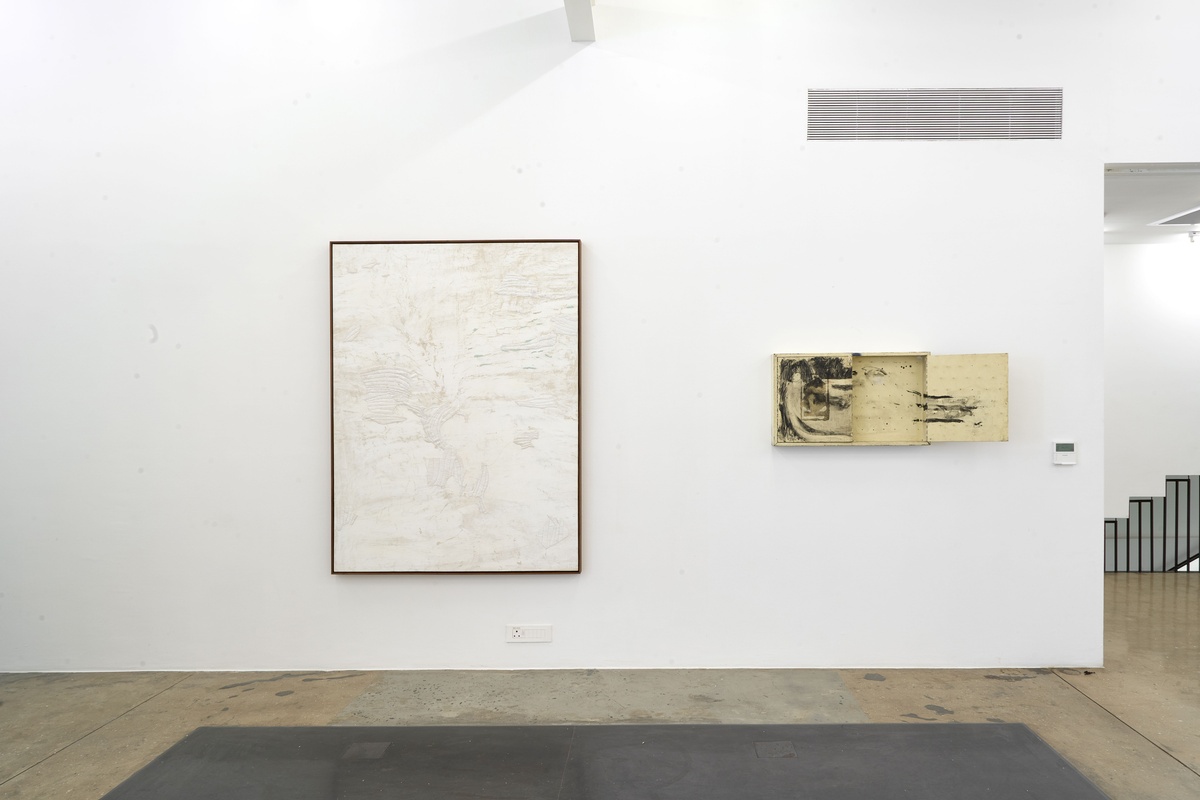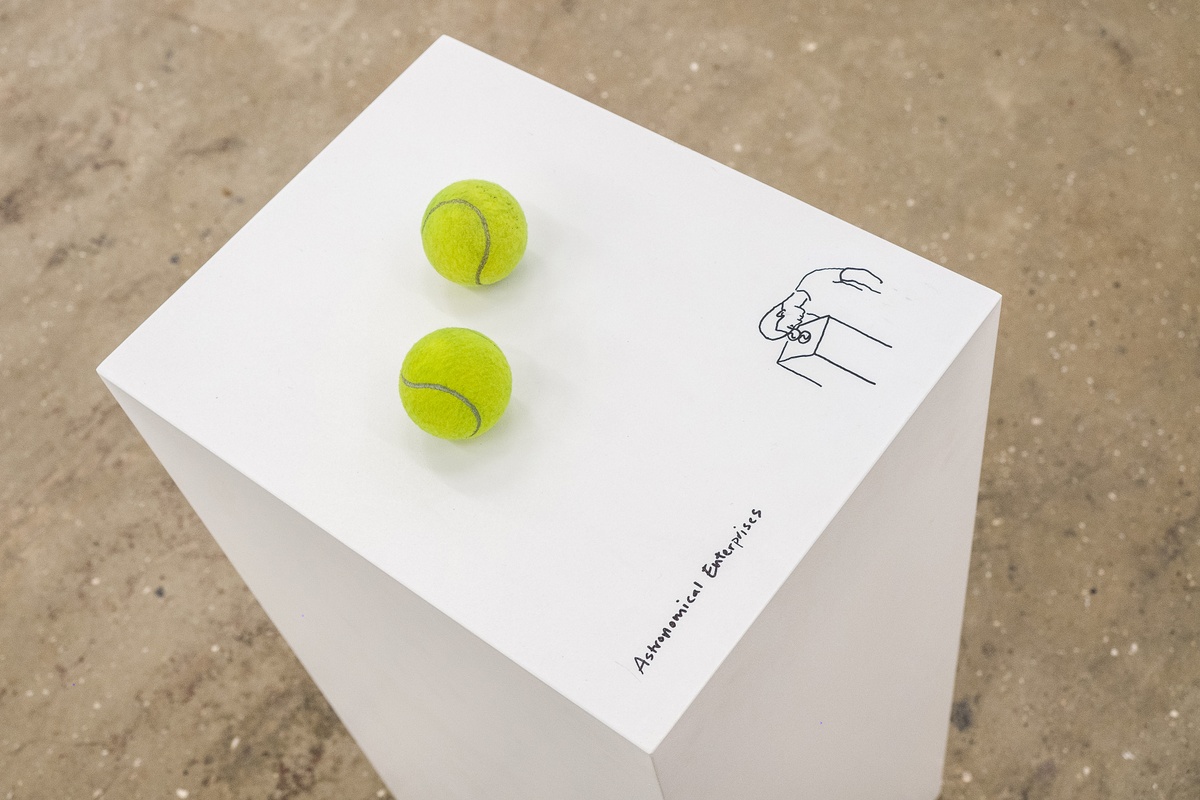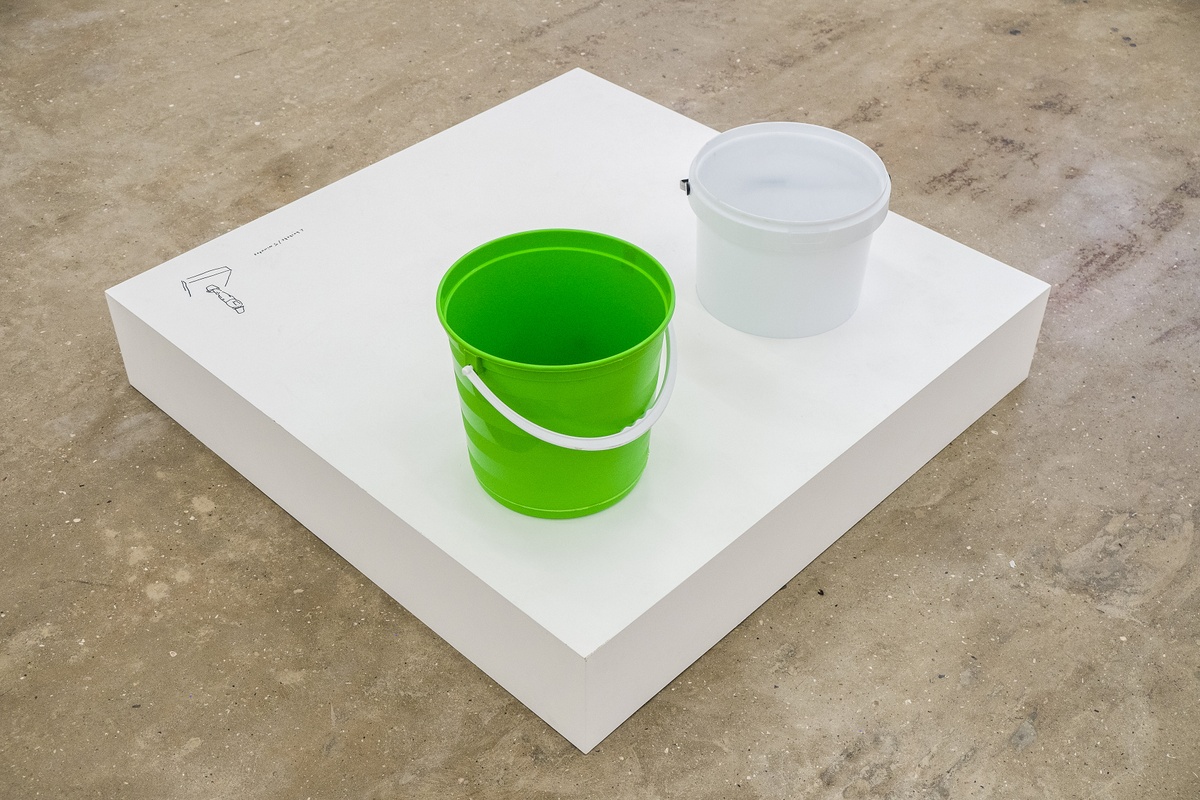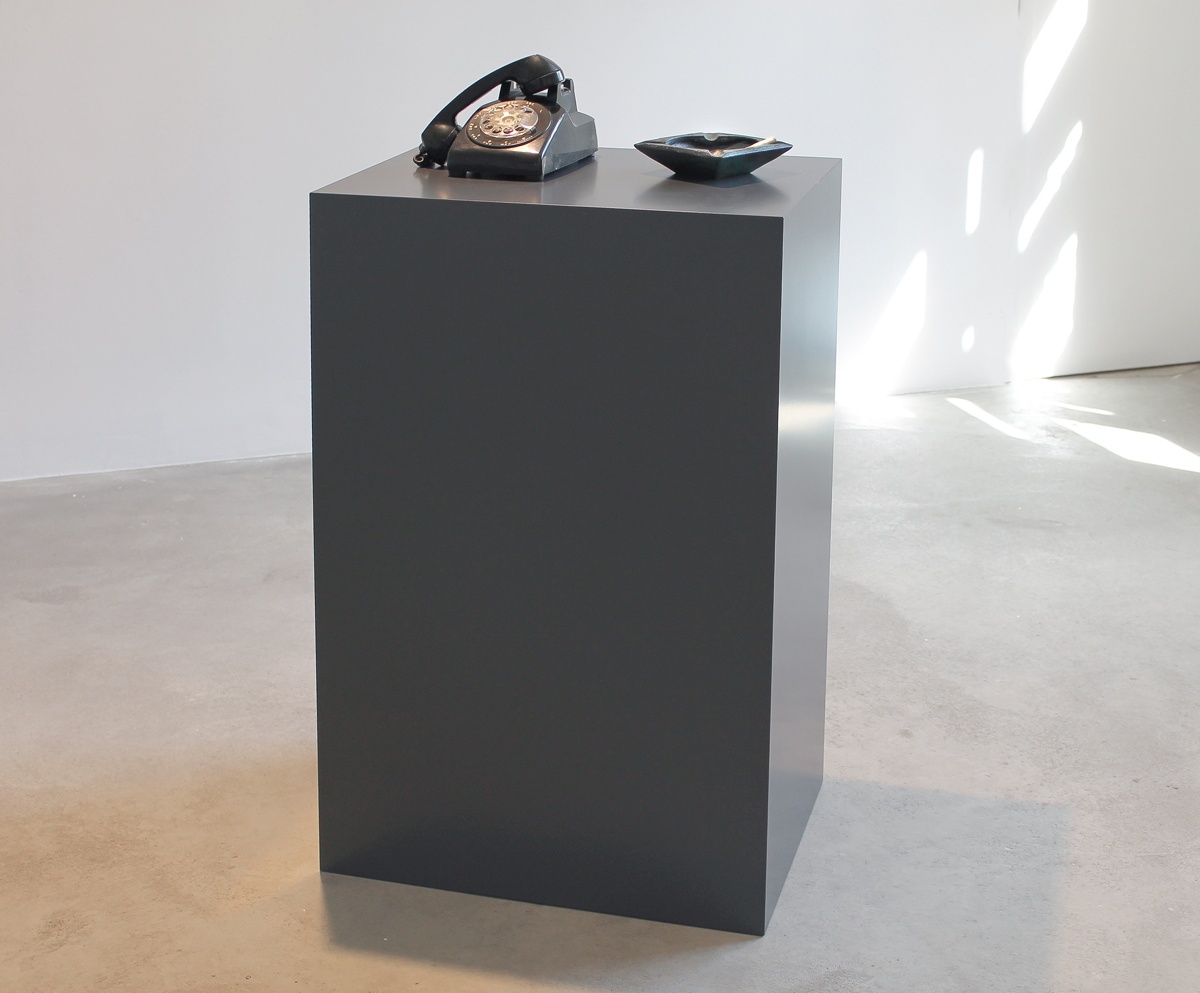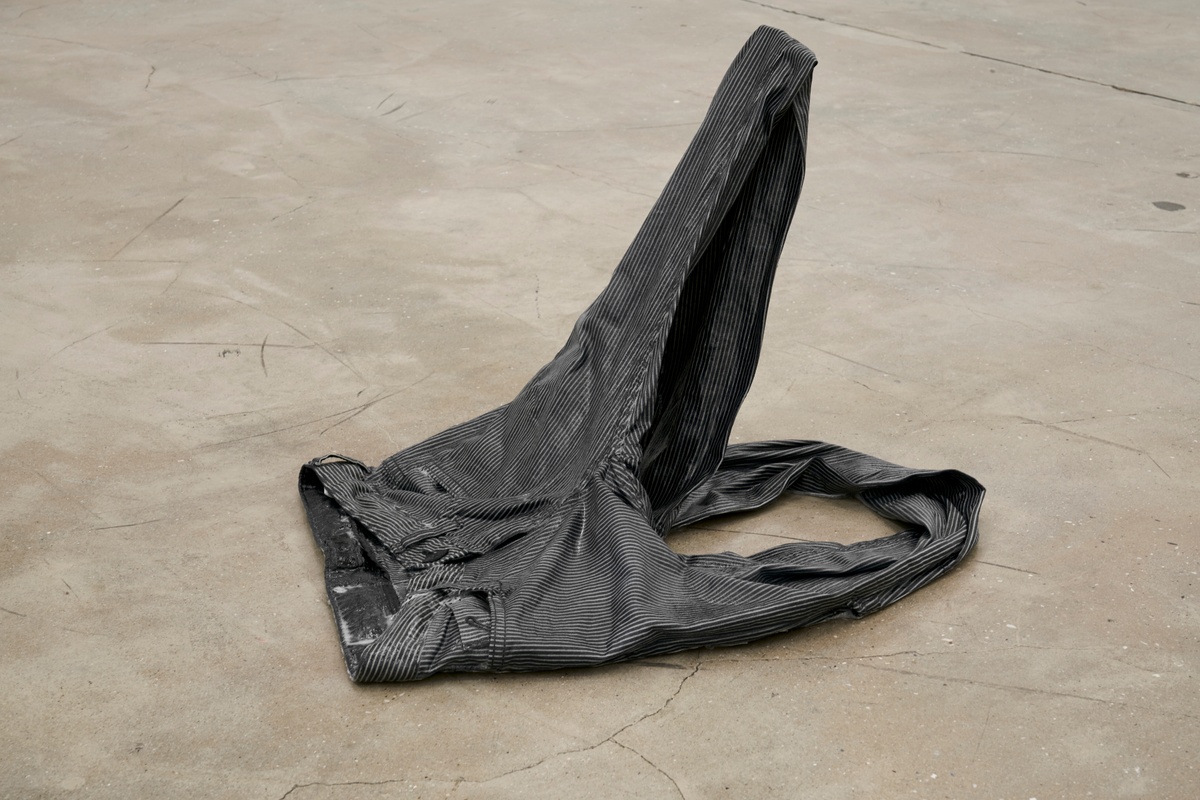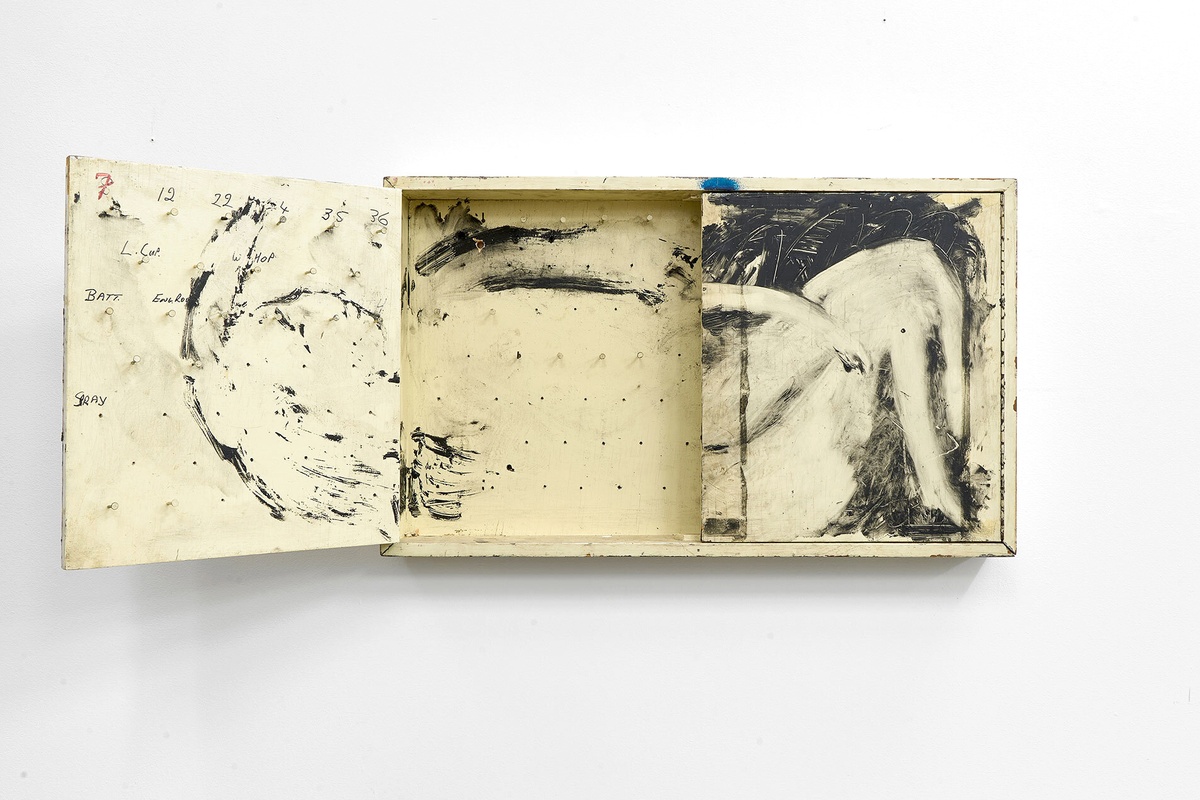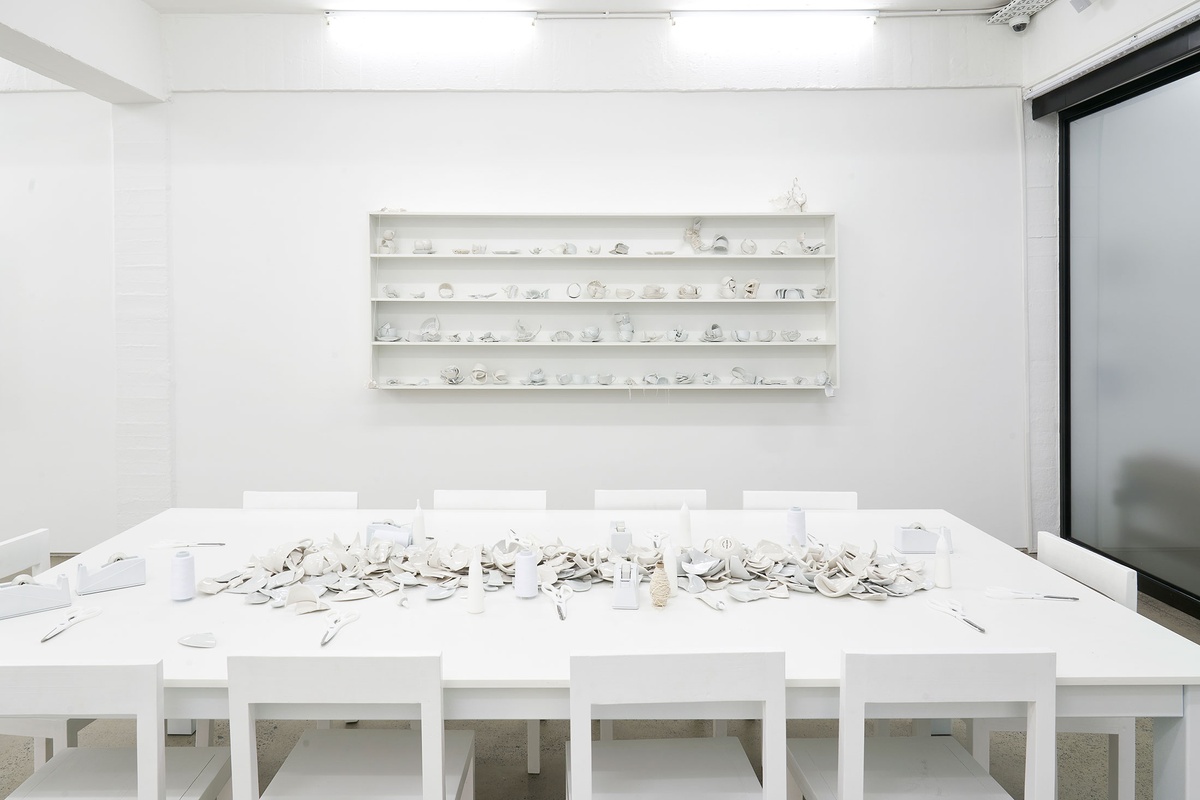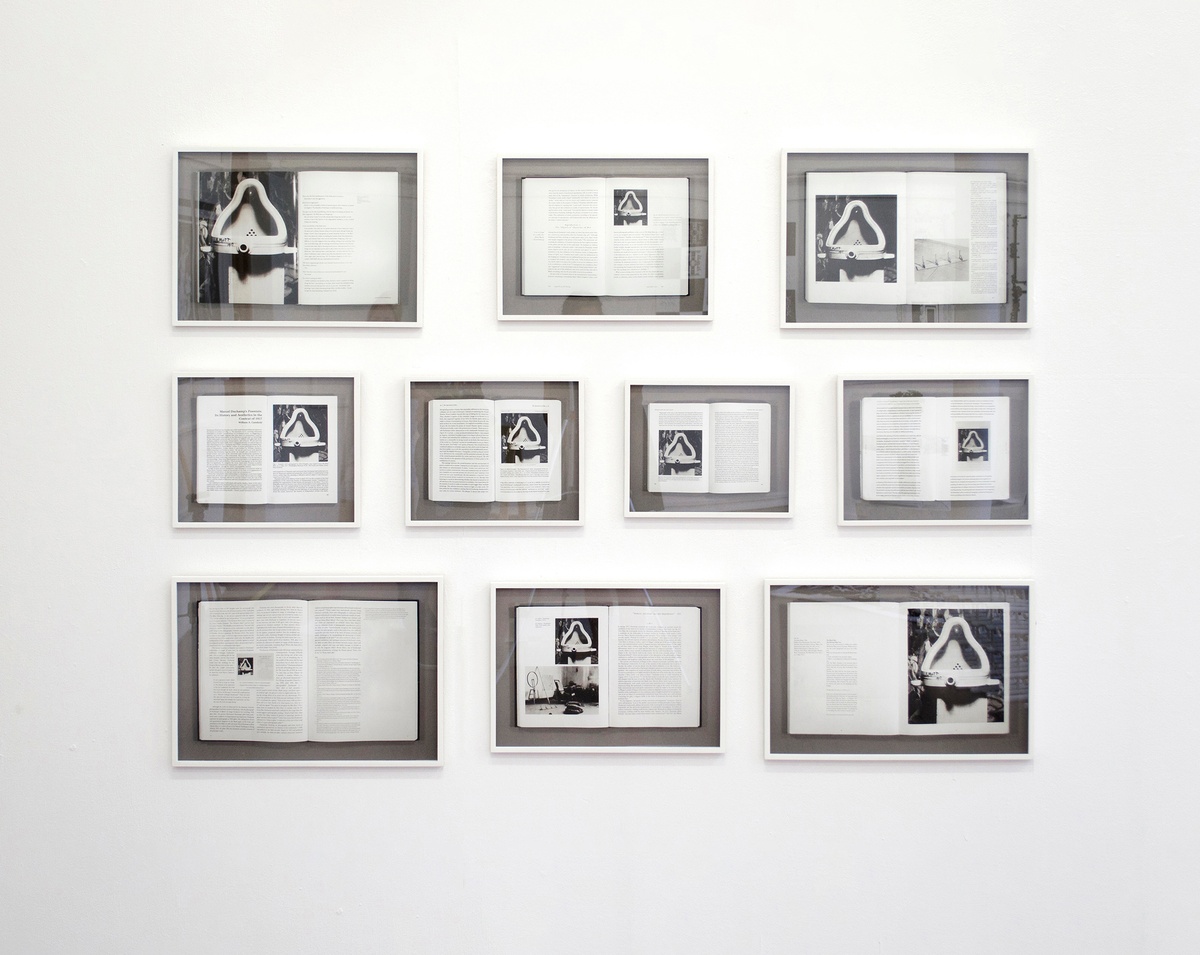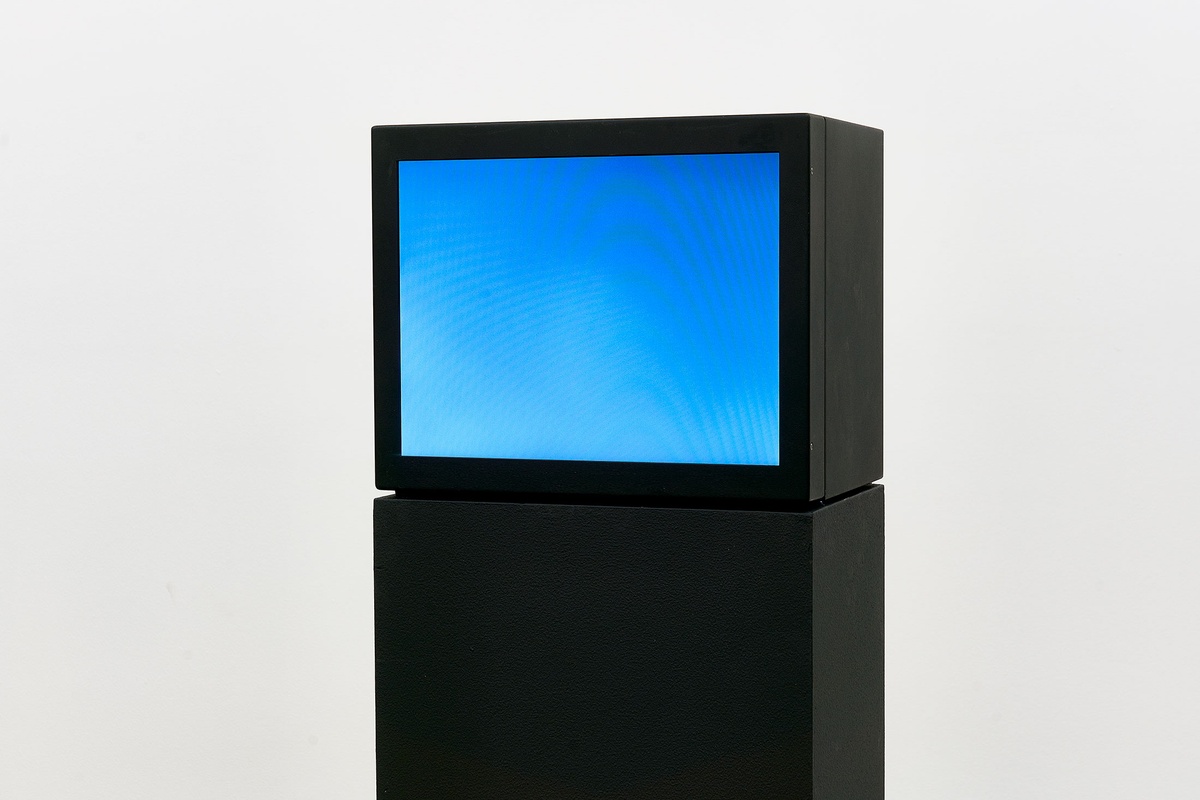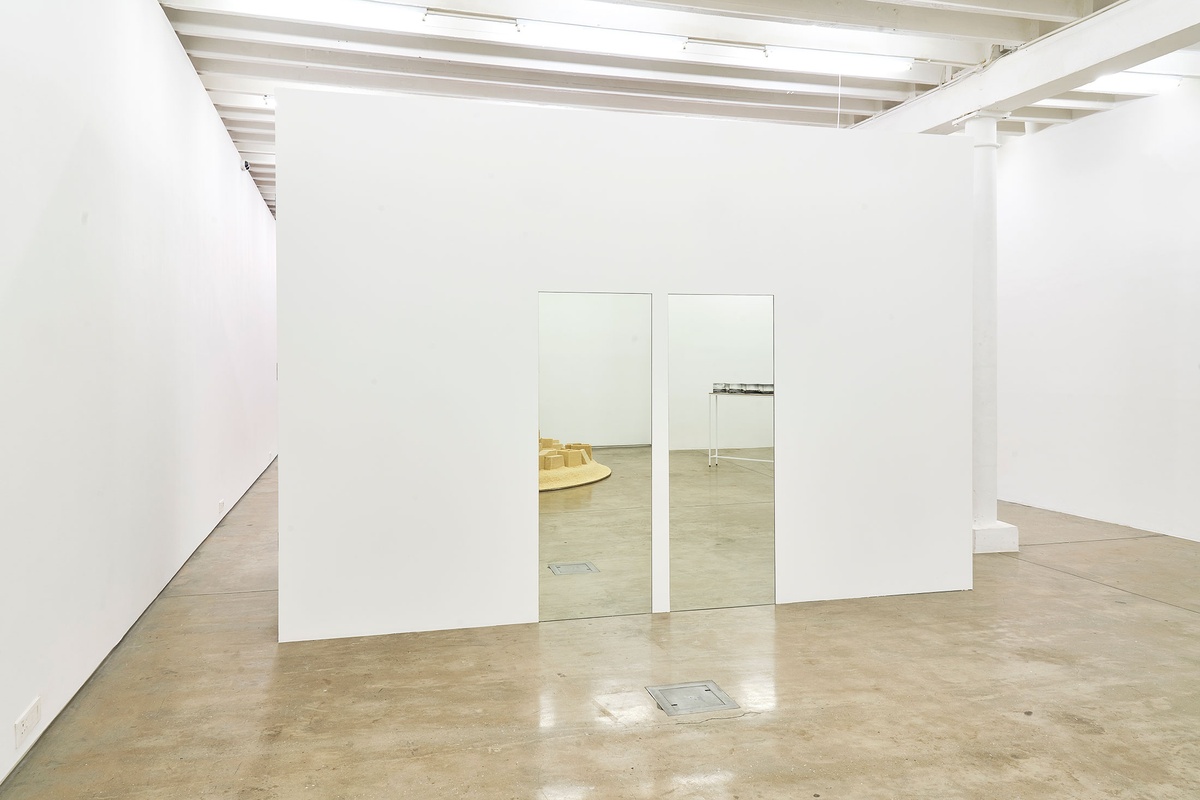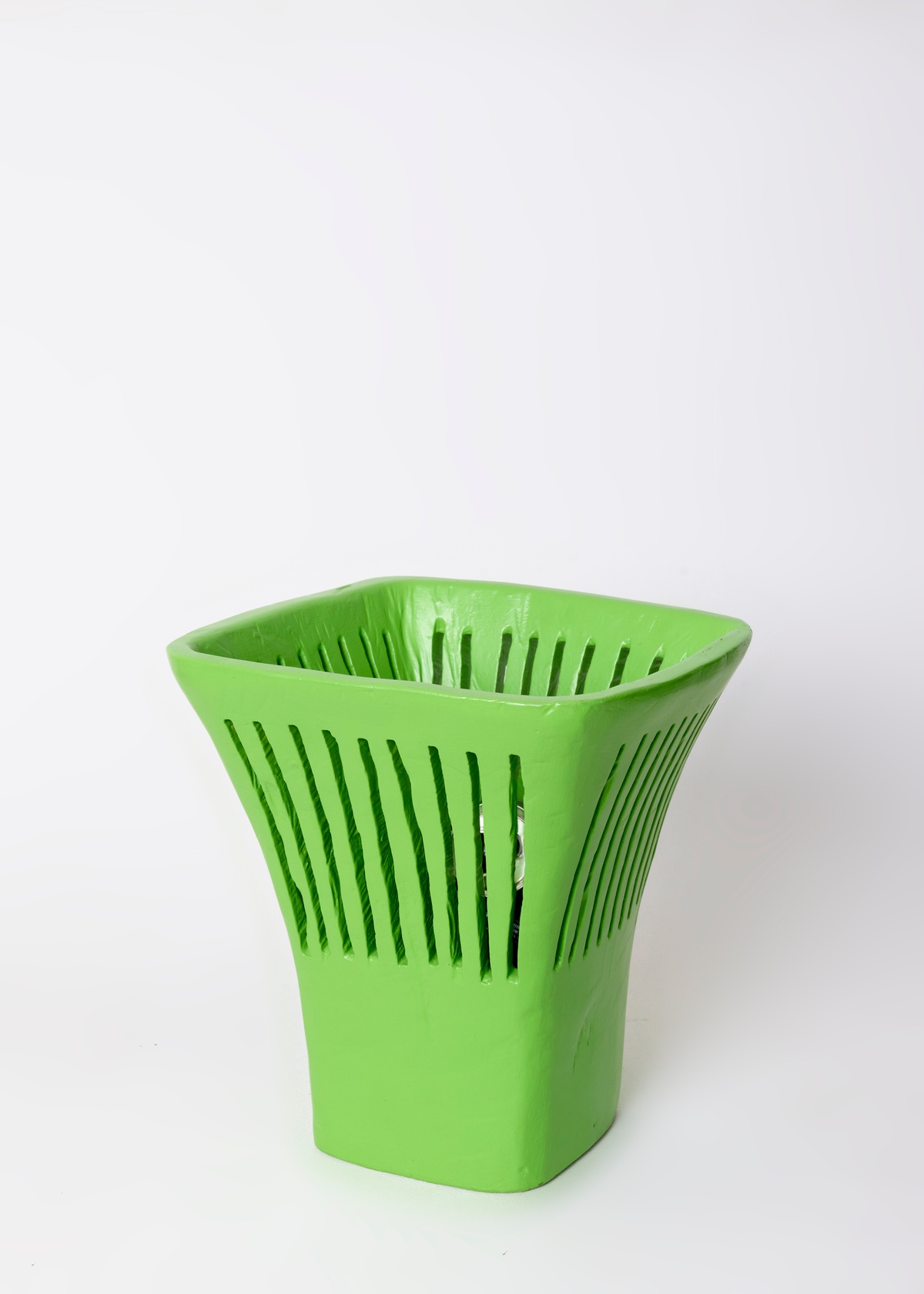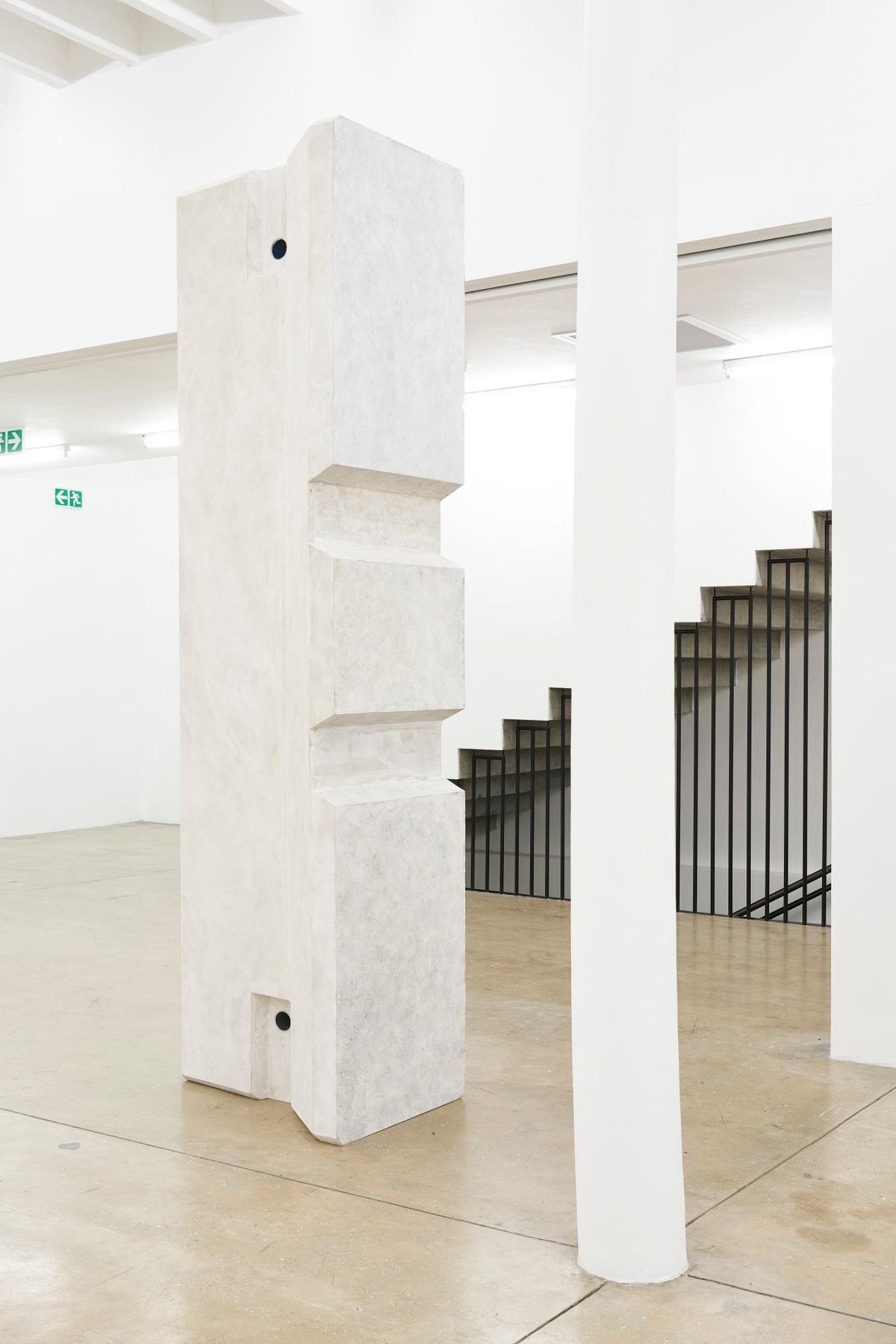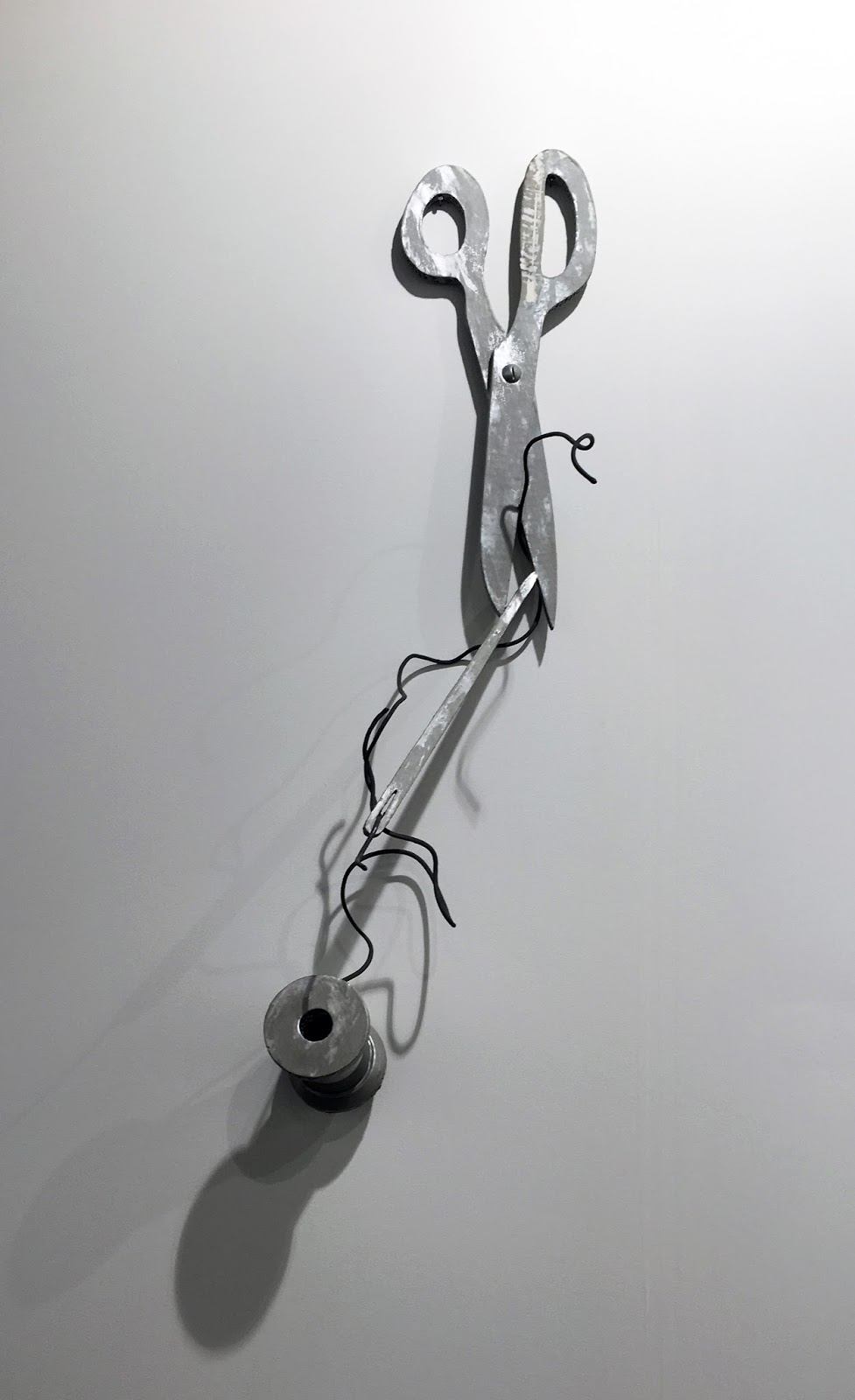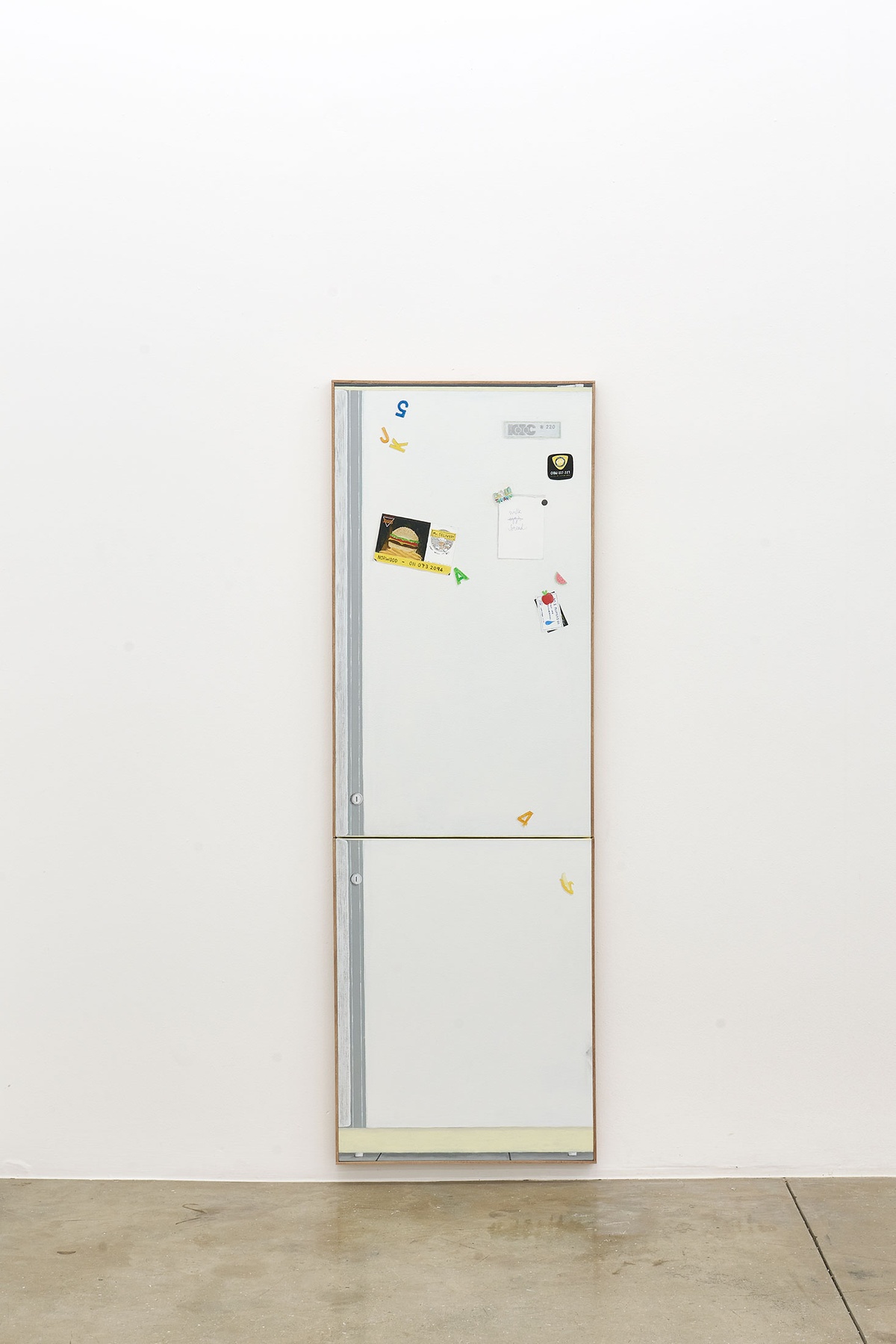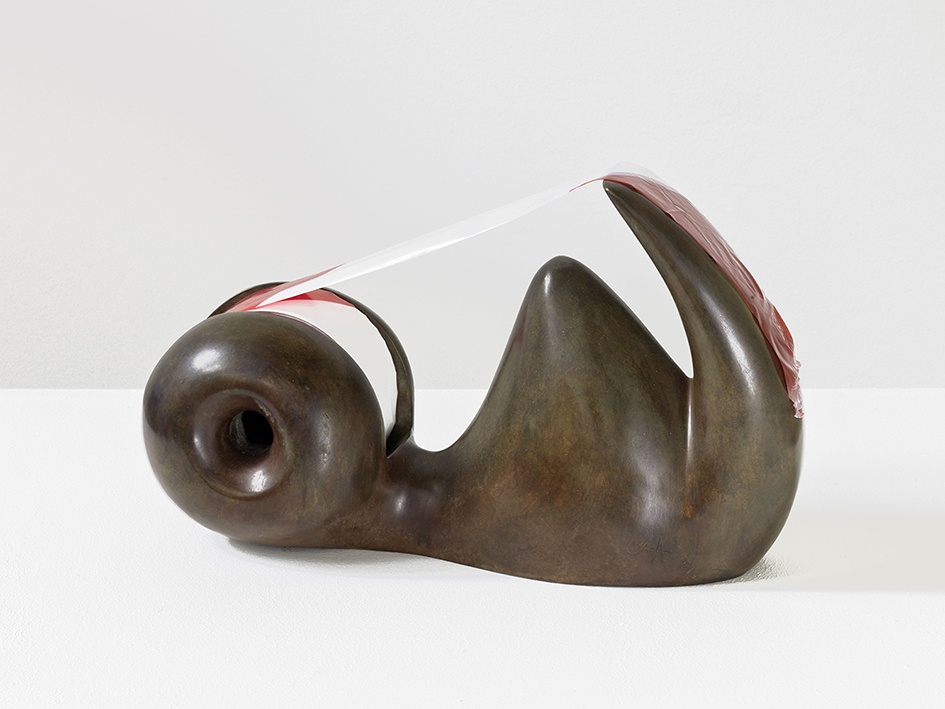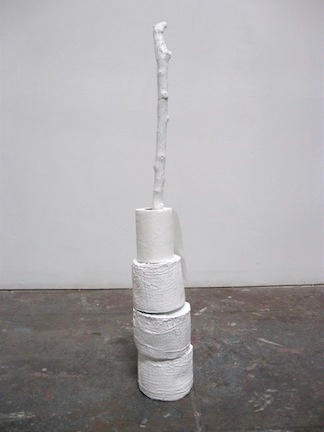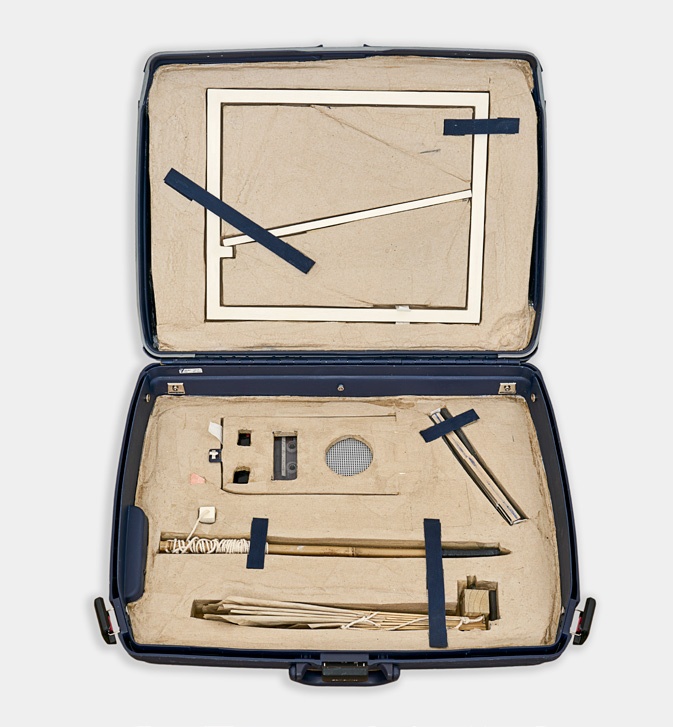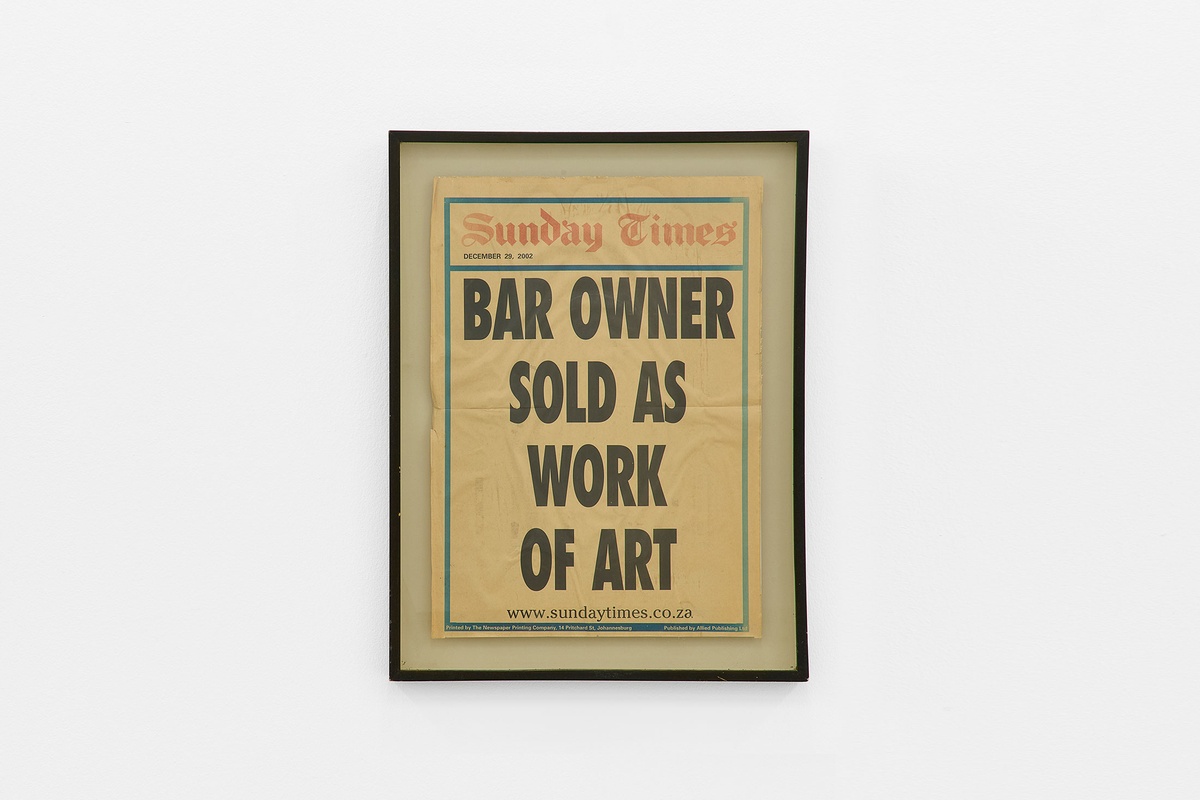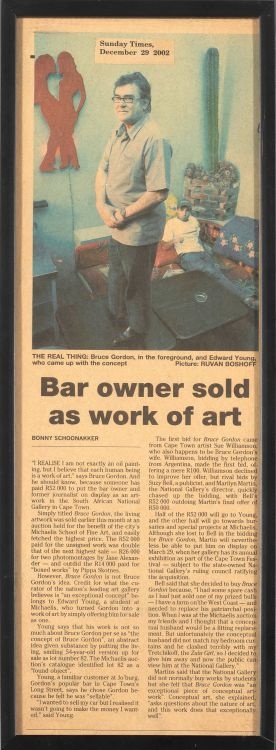Jared Ginsburg
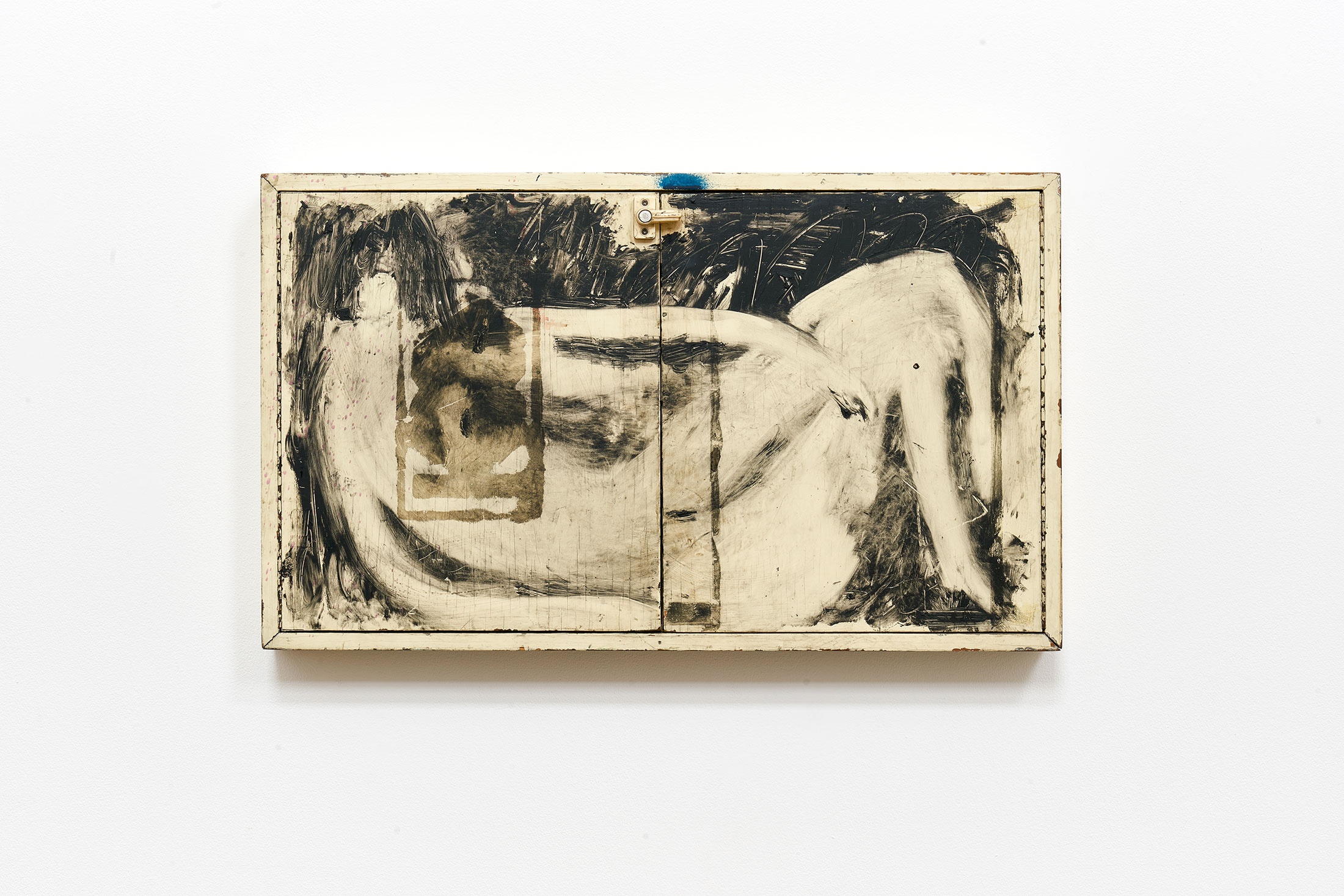
The cabinet’s patina of incidental marks recalls its previous function as storage. To these, the artist adds his own in black oil stick, tracing with loose gestures the impression of a nude study just this side of figuration. Worked into the chipped paint, the oil composition does not appear imposed on the object but rather inherited by it, much as its many stains, scratches, and old adhesive were inherited – over time and tangentially. To this writer, the cabinet has about it a sense of pause, being momentarily removed from time’s flow to hang on a gallery wall before being returned to usefulness, the missing keys rehung on its many hooks. But such imaginings are purely fanciful. Once removed from Ginsburg’s studio, the cabinet assumed a new life as artwork – however ‘untitled’ – with all the staid finality ascribed to such category of object.
b.1985, Cape Town
Jared Ginsburg’s studio practice offers a repertoire of hesitations and inventions, a material study of perhaps and what if. With sculptures, video works, drawings and prints – or, as the artist says, with remains, traces, instruments, and devices – Ginsburg notates the time spent making, discarding, and making again. In Ginsburg’s studio, everything presents itself as potential material; off-cuts and waste, even old and forgotten artworks, are repurposed and reimagined as ‘found objects’. This is perhaps most evident in his kinetic sculptures, which carry traces of their previous lives as other works. They are inexact and fragile constructions; a series of propositions for further propositions, object studies of objects only conjectured.
